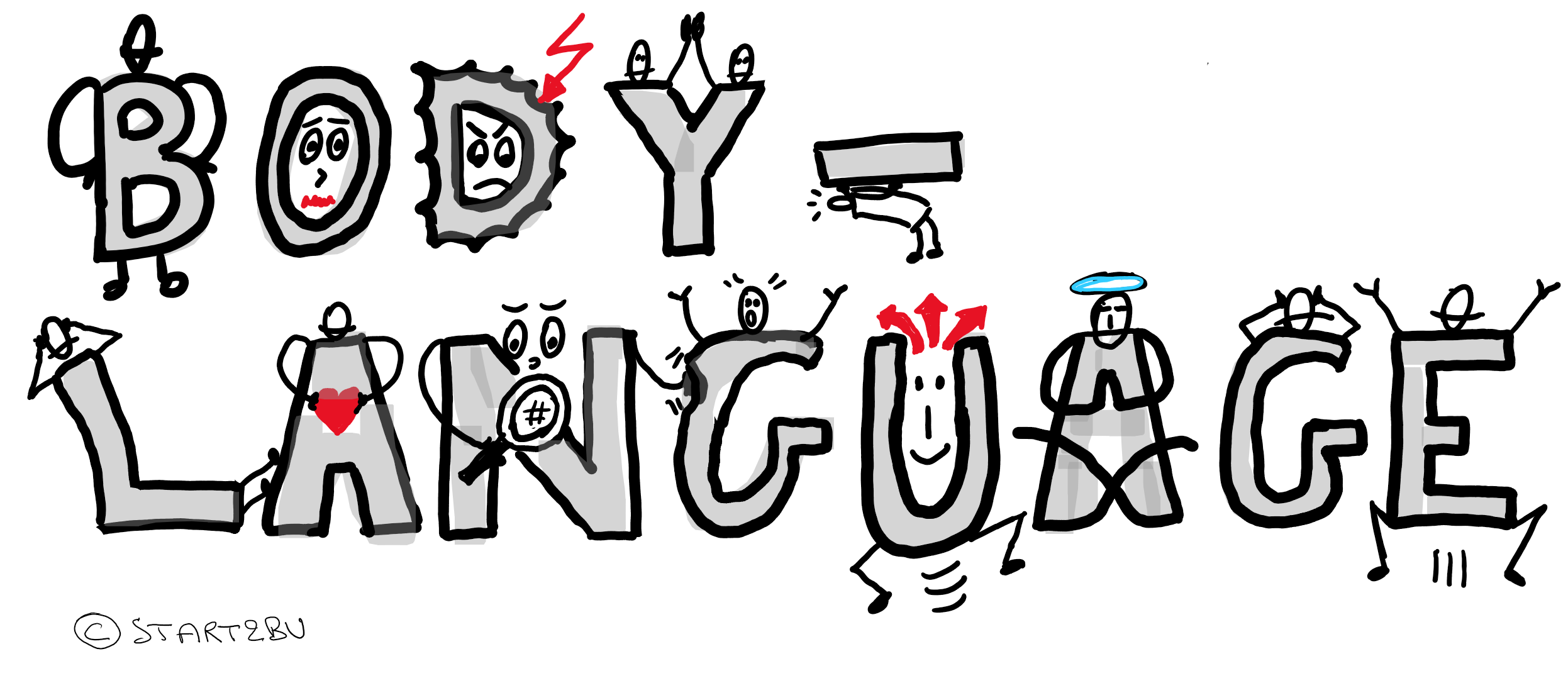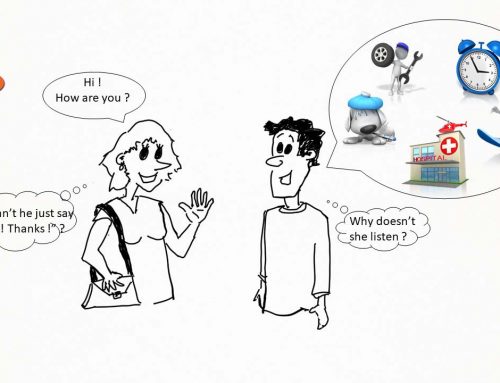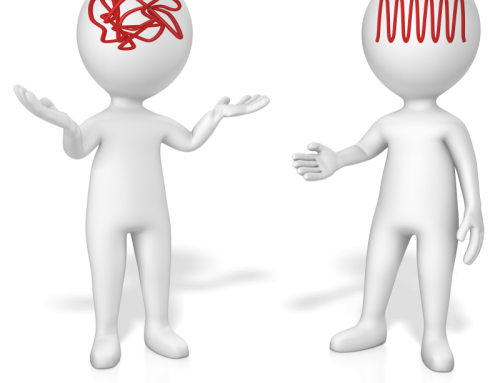Are you body language aware? 5 ways to better manage your body language
Body language is an integral part of interpersonal communication. Even if you consciously not want to communicate, you still do. Only in your sleep you can truly say that you are not communicating. Unless you dream out loud, of course!
In short communication consists of:
- words and phrases; the way we construct our sentences says a lot about our personality. Interested in finding out more? You will discover all about this in my workshop on working styles .
- the tone and use of your voice
- body language
Awareness of your own body language: what does it deliver?
- You can adapt your communications to the situation and effectively focus on results, such as dealing better with difficult customers and/or colleagues.
- You can build trust in relationships with others faster.
- A good starting position to negotiate positive results.
What can go wrong with inappropriate body language?
Incongruity or confusing language
What I heard from a participant during training:
“People don’t take me seriously. I give clear instructions and I tell them how serious I am. I find it very frustrating.”
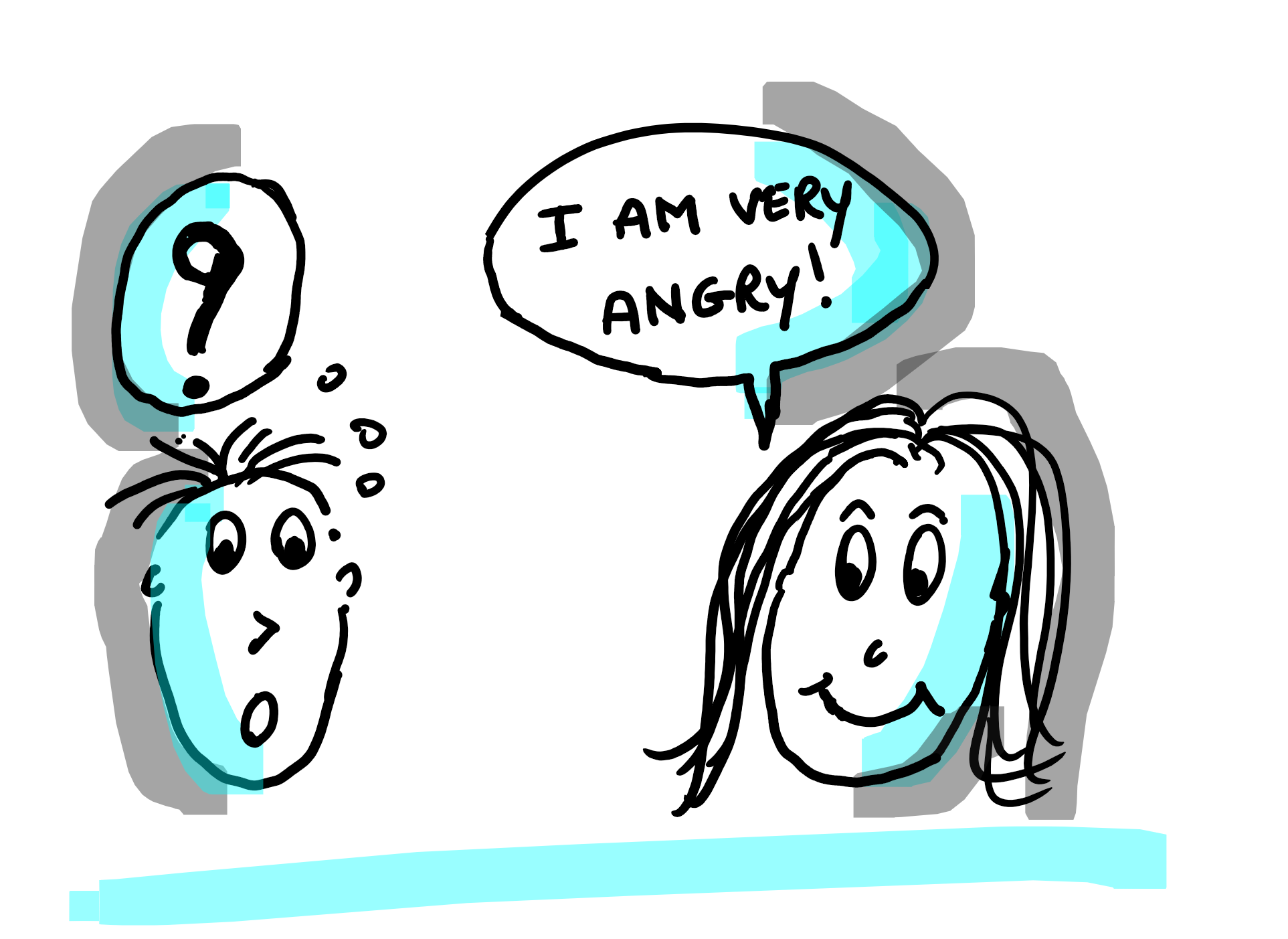
The feedback to this?
“When you say this, you have a smile on your face. I imagine they don’t take you seriously.”
We may have learned in our childhood to hold back anger, or to always seem happy even though we feel deeply sad inside. This is called subsitute feelings(1), racket feelings(2) or non-authentic feelings. Instead of showing our real emotions, we are only going to display socially acceptable emotions. Our body language tells a different story to how we really feel. This is called incongruity.
Unconscious facial expressions or behaviour
Think of rolling eyes, sighs, a grin, frowning, squinted eyes, strumming fingers, dreaming, swaying back and forth, looking at your smartphone and so on.
Not everyone is equally expressive in their facial expressions. Some people can hide this more easily than others. If our facial expressions and behaviour match what we say in the appropriate context, this is very effective. The reality is that it is not always appropriate to just show what we think or feel for different reasons. To remedy this, it is necessary to first become aware of our own body language before we can do anything about it.
Saved frustration
Sometimes there is no way to respond assertively to a person or situation because the situation doesn not allow it, or it would be inappropriate. When something starts to bother us and we cannot deal with it in that moment, our willpower to control our behaviour decreases. This can lead to behaviour that we might regret afterwards.

In negotiations your body language can betray you
In negotiations, it is crucial to have a good command of your body language. Otherwise, your motives or concerns will betray you faster than you think. A poker face can sometimes be useful. You need to prepare yourself beforehand for difficult negotiations. Having worked in trading for 13 years (sales according to supply and demand) I learned by experiencing how important the right mindset is to close the best deal.

The degree of success will largely depend on the degree to which you can master your body language. It takes practice to appear calm when the nerves are screaming inside. Obviously, this is also a great skill when speaking to an audience.
A communication model
Dr Mehrabian’s research in the context of ‘liking’ has led to a widespread communication model known as the Mehrabian’s communication model.
An important side note to this model, is that unfortunately, it is sometimes presented over-simplistically in courses because the context is not mentioned.
Mehrabian conducted his research on the basis of words and expressions that may or may not correspond in terms of emotions and in the context of ‘liking-disliking’ (as described Dr Mehrabian’s book, ‘Silent messages’).
His research showed that when we communicate about emotions and attitudes, the meaning of words use 7%, the tone and voice uses 38% and the body language – especially facial expressions – weighs no less than 55%. If an evacuation happens because of a fire or if you ask someone for directions for the road, the context is completely different and the meaning of words will tend to 100%.
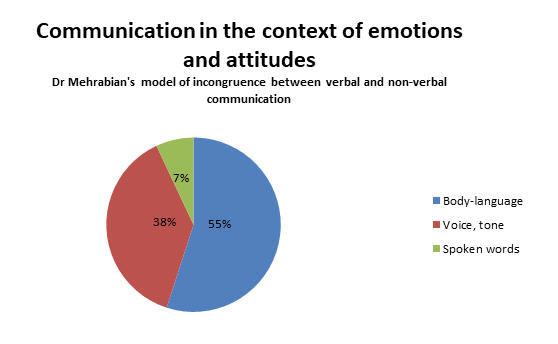
What can you do to master your body language? 5 fool proof tips.
- First, seek feedback from others. Find someone you trust to tell you honestly about your body language. If you are in a meeting with others, agree on a signal so that you are made aware of an ineffective facial expression at the moment. A coach can also help you with this.
- Practice in front of the mirror. Once you have received feedback, you can practice your facial expressions in front of the mirror. You can also video yourself during a conversation and review it afterwards. This can be uncomfortable. I speak from experience!
- Be honest when appropriate for the situation. Trust is mainly built through congruent communication, what you say fully corresponds to the way you say it.
- Ensure the correct mindset. If you are going to conduct difficult negotiations, it is a good idea that you encourage yourself to come across as confident. Just watch Amy Cuddy’s TED-talk about powerposing. Make sure you have some ‘happy thoughts’ in the back of your mind for when things go wrong. Cheerful thoughts will help you master mindset control.
- Teach yourself relaxation exercises.The aim here is to find calm in the middle of the storm. Numerous relaxation exercises are possible. It is a matter of finding the right one that suits you. Some examples are controlling your breathing through belly breathing, mindfulness or yoga… Maybe you have a perfect exercise? Then I would very much like to hear it.
Do you want to know more about leadership, communication and authenticity?
- Yes, please send me leadership tips for free.
- Yes, I want to know more about the Start2BU workshops.
Starting this year, I have available ‘result-oriented negotiating’. Subscribe to the newsletter to receive the training calendar.

